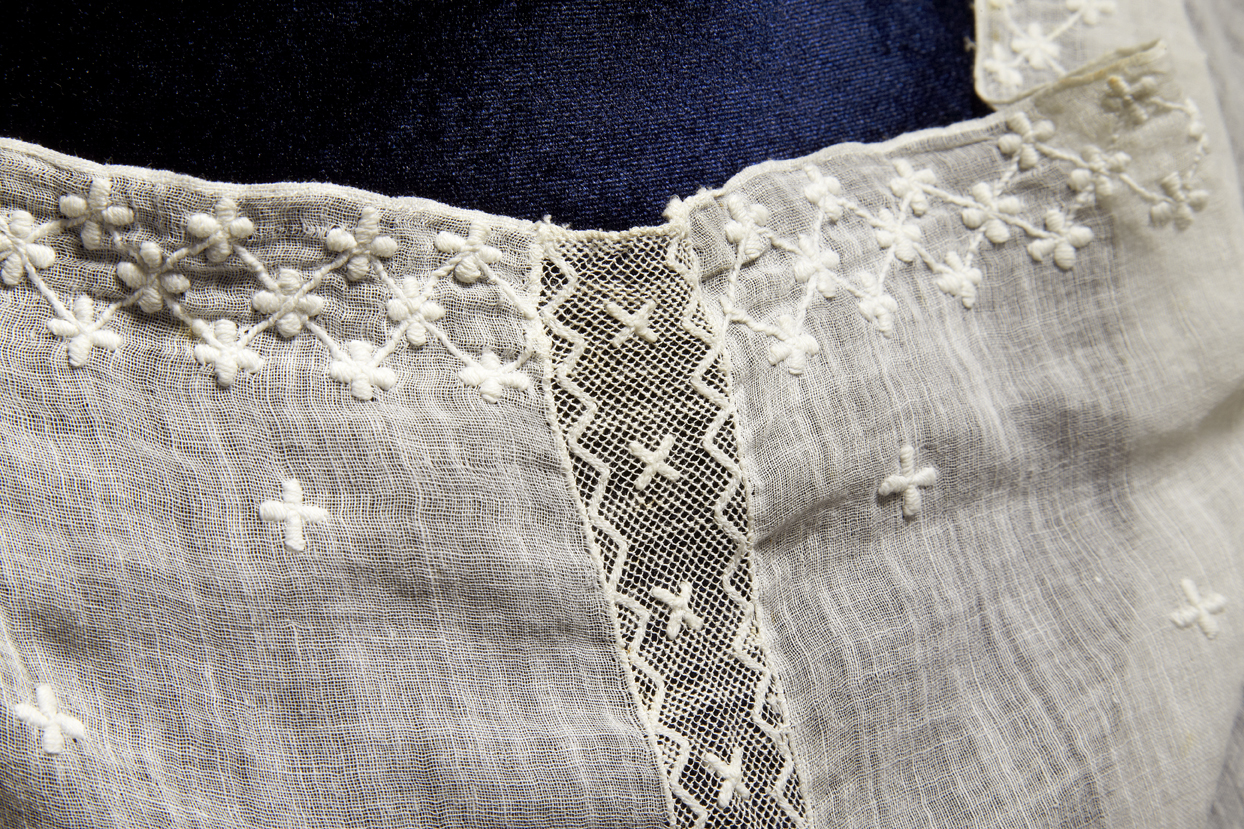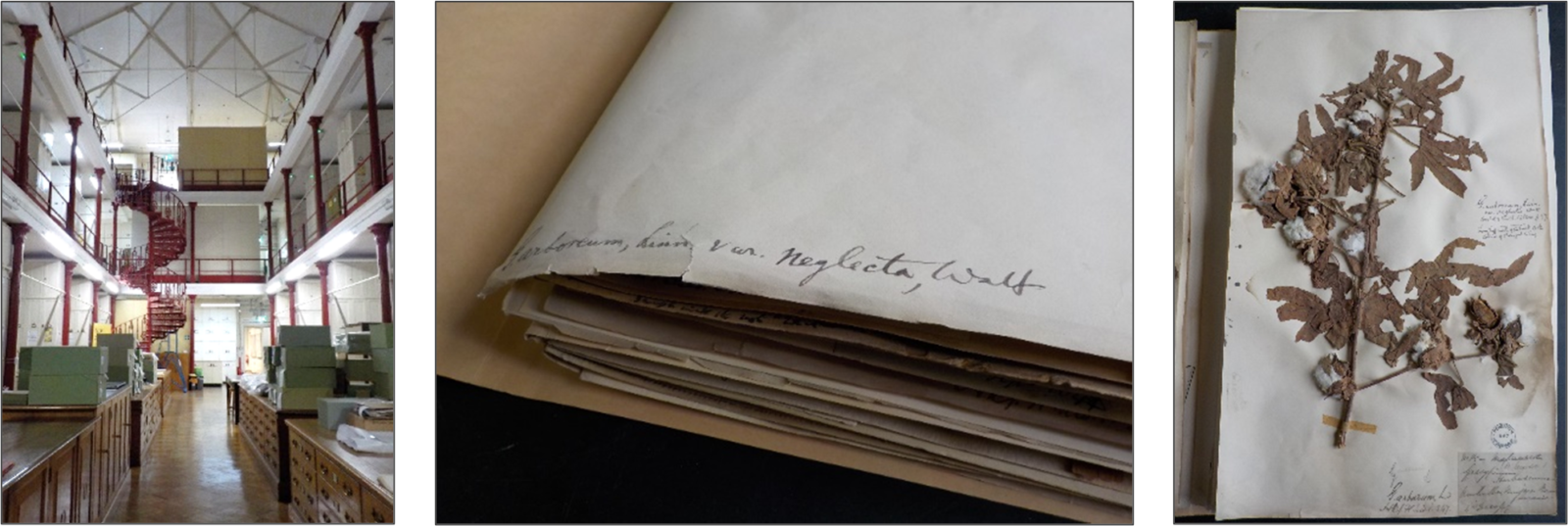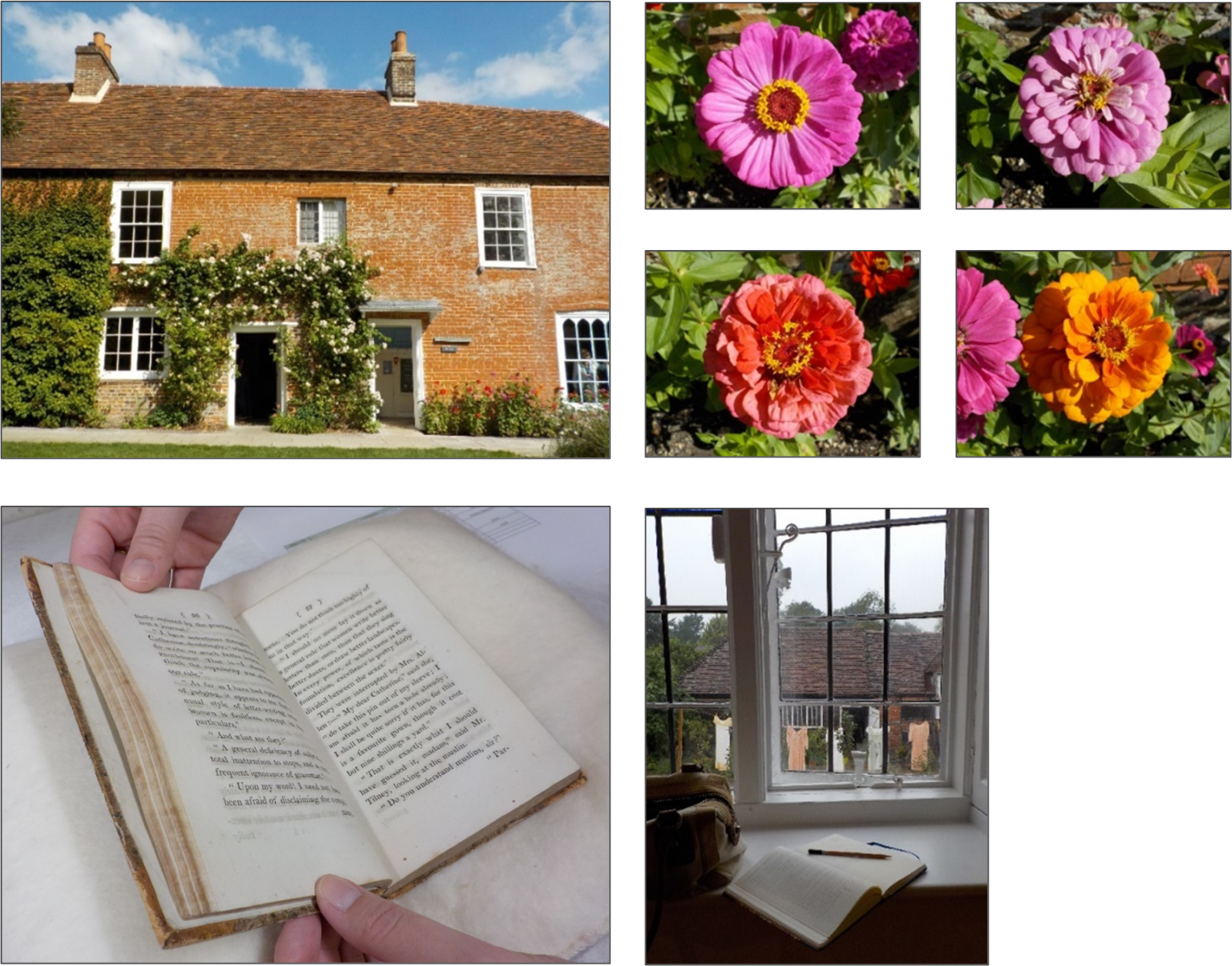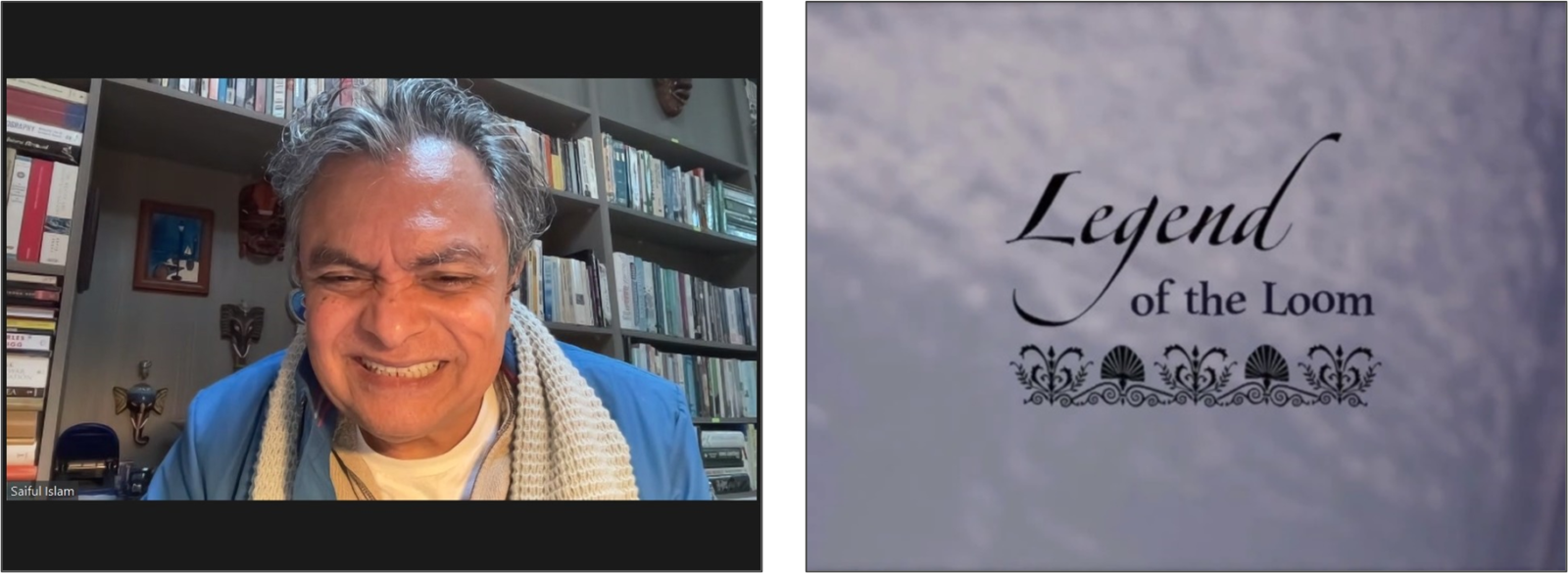WEAVING RESEARCH INTO POETRY
Poet Laboni Islam embarked on her Reimagine Residency last summer, visiting the Herbarium at Kew Gardens to learn about the history of Dhaka cotton, visiting Jane Austen's House to examine Jane Austen's hand-embroidered muslin shawl, and Zooming with the Bengal Muslin project to learn about Dhaka muslin. The result is a wonderful series of poems that trace a single possible history of the muslin shawl, from Bangladesh to Chawton. Here she presents her project in her own words...The Muslin Shawl
Some objects feel like master keys to the past. They unlock many doors – to the natural world, geography, culture, economy, history, and human stories. This muslin shawl – Indian cloth believed to be embroidered by Jane Austen – is a master key for me. I wanted to trace one possible history, from a cotton plant growing beside a river in Bengal to Jane’s world.
The Herbarium at Kew Gardens
My journey began with a trip to the Herbarium at Kew Gardens. Kew’s Herbarium was founded in 1852 and houses over seven million plant specimens, pressed, dried, and fixed onto Kew sheets for study.
I was curious about Dacca (now “Dhaka”) cotton and its nearest relatives, once used in the making of muslin. Harry Smith, a curator at the Herbarium, gathered specimens for me and shared his insights and expertise.
Every plant specimen told a story — about botanists’ descriptions, determinations, and species disputes, as well as colonial powers at play in pre-Partition India. The Kew sheets were replete with more-than-century-old handwriting and recent labels noting plant parts taken for DNA extraction. These were inky conversations happening across time.
A wall of wood cabinets housing specimens “PRESENTED BY THE HONOURABLE EAST INDIA COMPANY” caught my eye. Jane Austen’s life (1775 to 1817) coincided with the British East India Company’s rule in India (1757 to 1858). What were the intersections?
Jane Austen’s House and Northanger Abbey
Over four days of variable weather, I explored Jane Austen’s House and its environs. Zinnias growing tall along the brick wall bloomed brightly.
I viewed a first edition of Northanger Abbey, where the word “muslin” appears twelve times, frequently in a lively conversation between Miss Catherine Morland, Mrs. Allen, and Mr. Tilney. Jane wrote the novel in the late 1790s, when muslin was all the rage in Britain.
Rebecca Wood and Ellora Sutton took me on enthusiastic tours around the house, and I enjoyed a talk by fashion historian Hilary Davidson. I felt immersed in Jane’s world and appreciated the hospitality of the whole team.
Saiful Islam and the Bengal Muslin Project
Over Zoom, I connected with Saiful Islam, the founder and Managing Director of the Bengal Muslin project. Starting in 2014, Saiful assembled a dynamic team of farmers, photographers, researchers, scientists, weavers, and more — on a mission to tell the story of Bengal muslin from a Bangladeshi perspective.
He generously screened his documentary, Legend of the Loom, and mailed me a copy of his book, Muslin. Our Story.
What was the tale of the cotton plant known locally as phuti karpas? How did Dhaka muslin contribute to British fashion, culture, and economy? How did Britain contribute to the unravelling of the Bengal muslin industry? And how did this connect with Jane’s shawl and fictional worlds?
There were many threads, and I wanted to weave research into poetry.



